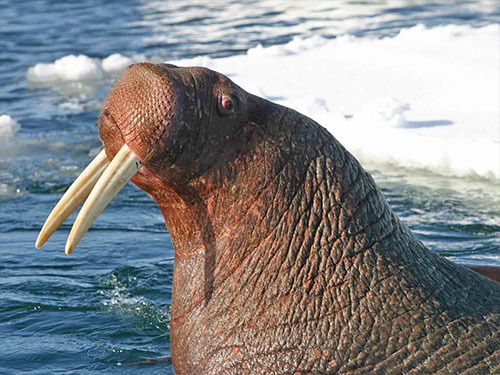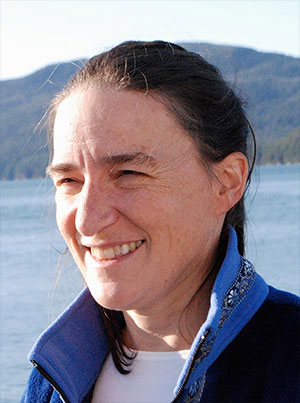
What caused 39 walruses to wash ashore dead in western Alaska?By PAULA DOBBYN
December 19, 2017
The test results emerged from a dead walrus stranding event in late summer involving 39 animals. After the walruses washed ashore, Gay Sheffield, a marine biologist with Alaska Sea Grant, helped coordinate a collaborative response involving agencies and community members of Diomede and Shishmaref.
An algal biotoxin is a potentially poisonous substance produced by harmful algal blooms. It cannot be seen, smelled or tasted and cooking or freezing does not destroy the toxin. The walrus stranding on the northern Seward Peninsula prompted Sheffield to ask residents of Diomede and Shishmaref to collect samples of the intestines from four walruses (one harvested and three from carcasses that had washed ashore.) NOAA’s Wildlife Algal Toxin Research and Response Network found low levels of domoic acid and moderate levels of saxitoxin in the carcass samples. A high level of saxitoxin was documented in the harvested walrus—over the federal seafood safety limit for human consumers. The final results for this sample are still pending.
Saxitoxin, which has been documented in the Bering Strait region before, targets the nervous system and blocks nerve function. If high concentrations of saxitoxin are eaten, breathing difficulties and paralysis occur in both humans and marine mammals, a potentially deadly condition called paralytic shellfish poisoning (PSP.) “The findings are of interest because of the large number of walruses and seabirds that washed ashore during August and September of this year,” said Sheffield, a Marine Advisory agent based in Nome. “The presence of algal biotoxins in marine wildlife commonly consumed in the region raises many food security questions and requires additional vigilance.” What caused the deaths of 39 walruses remains a mystery. With results from only four walrus, scientists have not been able to pinpoint what happened to the animals. Hundreds of seabirds were also found dead around the same time. The U.S. Fish and Wildlife Service found the seabirds were emaciated and are trying to determine the level of saxitoxin in them as well. There have been no reports of people suffering from PSP after eating shellfish in the Bering Strait region during August or September 2017. PSP is not likely to be found in walrus muscle or blubber but it could show up in the intestines, the stomach or stomach contents. Walrus frequently eat clam meat and it’s not uncommon for Bering Strait region residents to consume clams washed ashore during large storms or from the stomachs of harvested walruses. The Southeast Alaska Tribal Ocean Research (SEATOR) group, operated by Sitka Tribe of Alaska, is available to test shellfish for dangerous biotoxins to improve tribal and rural access to traditional foods. The Alaska Harmful Algal Bloom Network, formed in 2017, aims to provide Alaska’s coastal communities with research and monitoring tools. “Bottom line though is if you feel sick after eating shellfish, seek medical help immediately,” said Sheffield. The Alaska Department of Health and Social Services is available to provide information about symptoms and treatment options. The number to call Monday to Friday during regular business hours is (907) 269-8000. The after-hours number is (800) 478-0084. Along with Alaska Sea Grant, partners on the walrus response notification include: Alaska Department of Health and Social Services, Centers for Disease Control and Prevention, Eskimo Walrus Commission, Kawerak Subsistence Resources Program, National Park Service, Native Village of Diomede, Native Village of Shishmaref, NOAA Wildlife Algal Toxin Research and Response Network, North Slope Borough Department of Wildlife Management, U.S. Coast Guard Aviation Detachment (Kotzebue), U.S. Fish and Wildlife Service (USFWS) Office of Law Enforcement and USFWS Marine Mammals Management.
On the Web:
Representations of fact and opinions in comments posted are solely those of the individual posters and do not represent the opinions of Sitnews.
|
|||||

